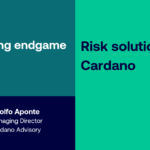Navigating pensions in M&A
Defined Benefit (DB) pension schemes remain a key stakeholder in corporate transactions
Many defined benefit (DB) schemes have seen their funding levels improve significantly since the gilts crisis of September 2022.
This presents a new opportunity for corporate sponsors and investors to create value during M&A deals. At the same time, schemes remain a key stakeholder in any deal – from our recent survey of over 200 CFOs, more than a third of CFOs (37%) believe schemes could even be a potential blocker to corporate activity.
In light of this, we set out below three key takeaways for sponsors and investors when considering M&A deals involving DB schemes.
- Scheme cash needs may be lower but non-cash solutions remain key
Previously, large scheme deficits often led to complex negotiations between the company and scheme trustees around the level of cash contributions needed to plug the funding gap.
Now that many schemes are better funded, a scheme’s need for cash contributions may be lower, however, well-funded schemes present a new challenge for companies and trustees. Trustees will need to protect the scheme’s position, and will likely be acutely aware of the potential for ‘regret risk’ if it were to weaken after the deal. In our experience, trustees will want to ensure that the scheme is fully funded and ready to buyout with an insurer in a range of corporate and scheme scenarios.
This could require security or other forms of non-cash mitigation, and companies / bidders need to factor in the related negotiations into their M&A planning. It is also important to consider how any security provided in favour of the scheme could be unwound as the scheme’s funding position improves over time.
- A transaction provides the opportunity to agree the broader scheme strategy
It is more important than ever that bidders and sponsors use an M&A deal as an opportunity to retest and formalise the scheme strategy with the trustees post deal. This can help to align the corporate and scheme objectives and ensure there is complete clarity around the strategy.
This can be executed via a Memorandum of Understanding in the first instance, which then becomes legally binding via a more detailed pensions agreement. The agreement should set out any mitigation agreed as part of the deal, but also a framework for the scheme’s funding and investment strategy, and parameters for the scheme’s end-game objective. The latter could involve setting out principles for how any potential future surplus would be treated, for example through a sharing arrangement between the sponsor and scheme.
- For well-funded schemes, M&A provides an opportunity to accelerate the scheme end-game
Where a scheme is well funded and potentially ready to be bought out by an insurer, companies / bidders will need to consider the best way to structure an M&A deal to unlock value.
For example, an M&A deal could provide the opportunity for the sponsor to accelerate a buy-in process with a view to carving out the DB scheme from the transaction and removing the related pricing and risk considerations.
By contrast, the company and bidders may see an opportunity to further improve the scheme’s funding position post deal, and even seek to generate a surplus, providing the scheme funding risk can be appropriately managed over the intervening period.
One thing is clear – for corporate sponsors, sellers and buyers, careful planning can not only ensure that DB scheme risk is appropriately managed, but additional value can also be created.





